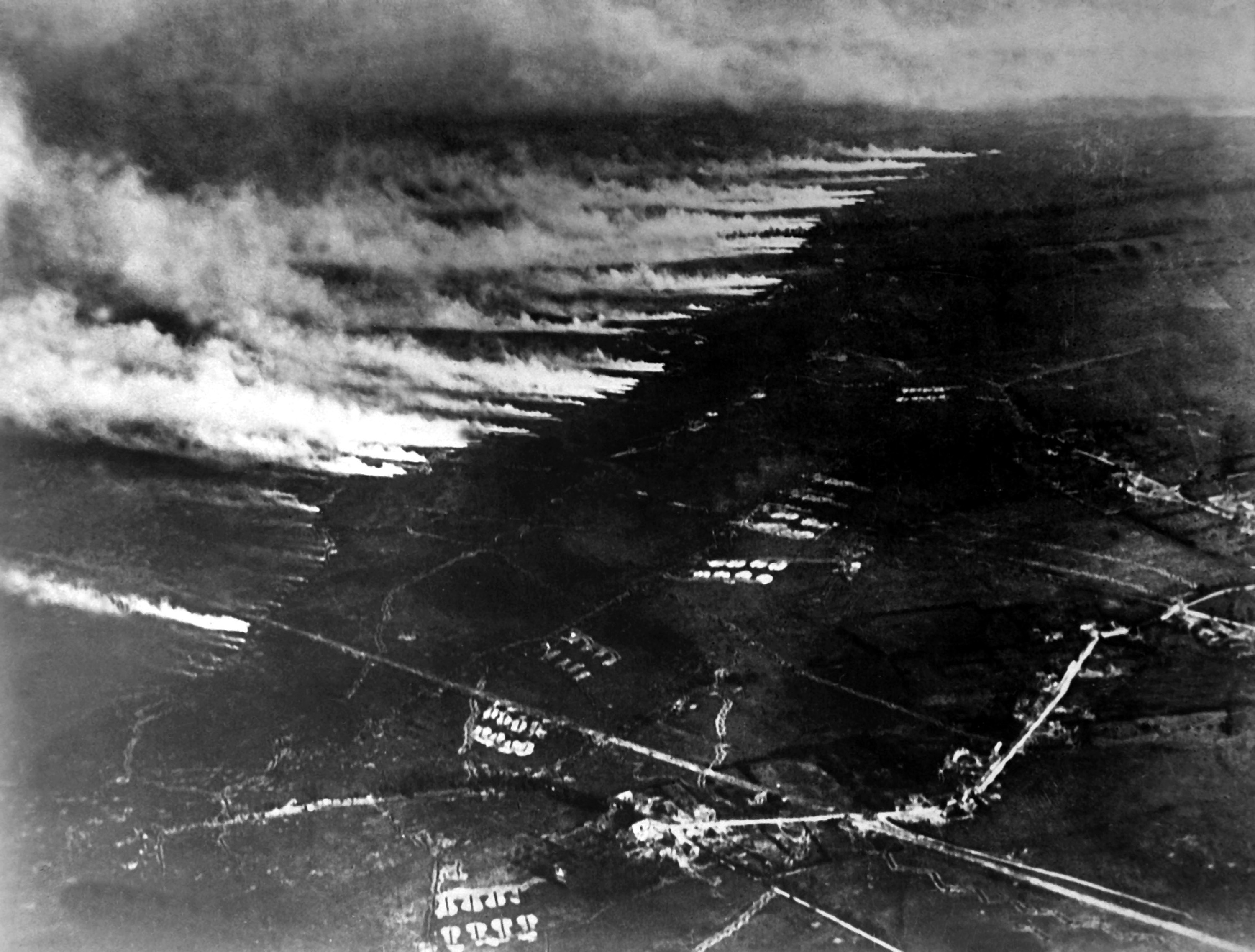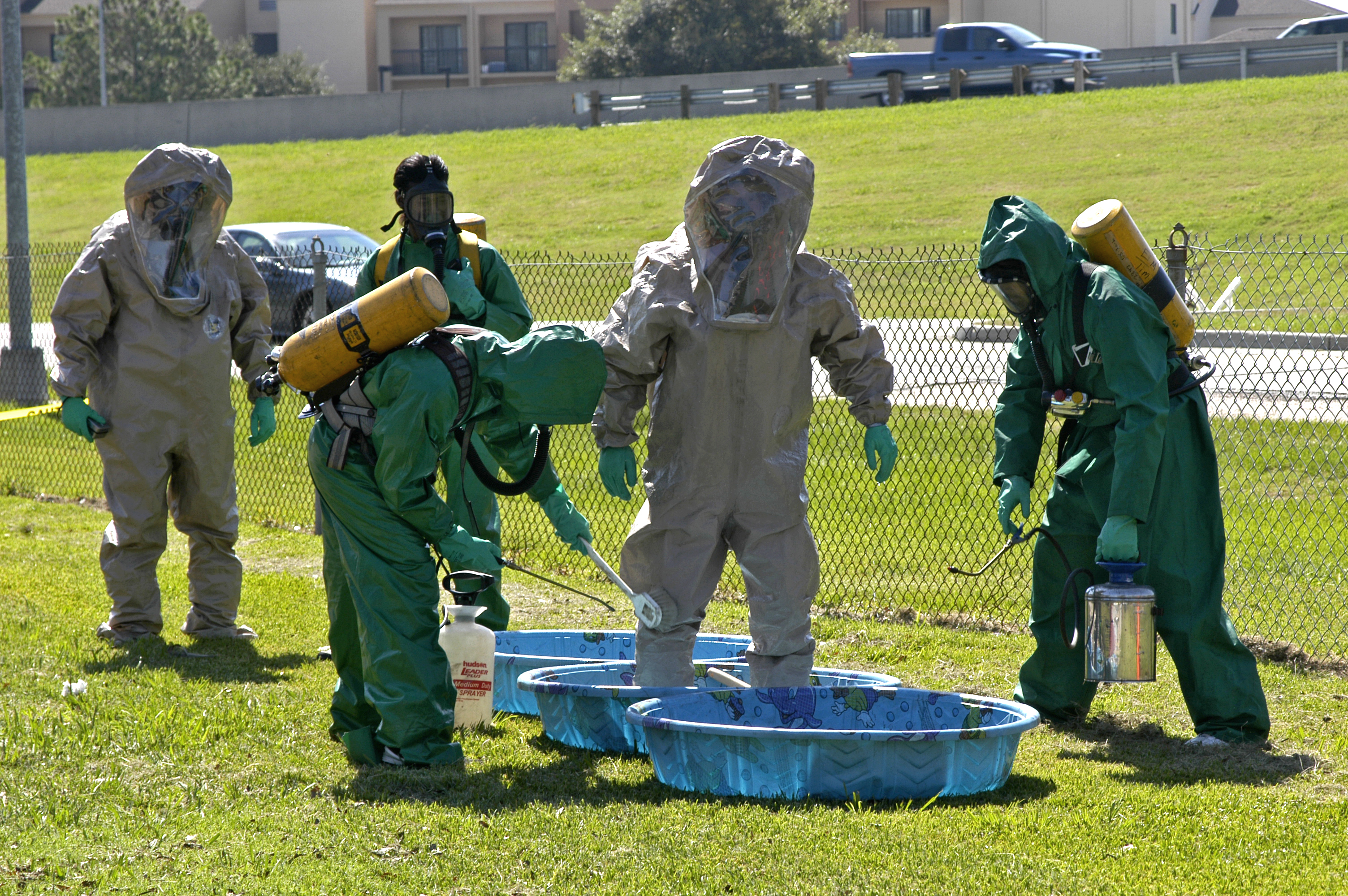|
Chloroacetone
Chloroacetone is a chemical compound with the formula . At STP it is a colourless liquid with a pungent odour. On exposure to light, it turns to a dark yellow-amber colour. It was used as a tear gas in World War I. Synthesis Chloroacetone may be synthesized from the reaction between chlorine and diketene, or by the chlorination of acetone. Applications Chloroacetone is used to make dye couplers for colour photography, and is an intermediate in chemical manufacturing. It is also used in the Feist-Benary synthesis of furans. *Reaction of phenoxide with chloroacetone gives phenoxyacetone, which is used to make a wide variety of different pharmaceuticals. A catalytic amount of potassium iodide is also necessary to facilitate a Finkelstein reaction. Purification Chloroacetone purchased from commercial suppliers contains 5% impurities including mesityl oxide, which is not removed by distillation. Mesityl oxide can be oxidized using acidified KMnO4 to form a diol (followed by s ... [...More Info...] [...Related Items...] OR: [Wikipedia] [Google] [Baidu] |
Fluoroacetone
Fluoroacetone is an organofluorine compound with the chemical formula . In contrast to trifluoroacetone, the compound has one fluorine atom. Under normal conditions, the substance is a colorless liquid. Fluoroacetone is also a highly toxic and flammable compound. Fumes of fluoroacetone can form an explosive mixture with air. Synthesis Fluoroacetone can be obtained by a reaction of triethylamine trihydrofluoride with bromoacetone. Applications Fluoroacetone is used as a catalyst to study the kinetics of the ketone-catalysed decomposition of peroxymonosulfuric acid (Caro's acid). It is also a precursor material for the production of higher fluoroketones. Fluoroacetone has not been used as a lachrymatory substance in contrast to other halogenated acetone derivatives, such as bromoacetone or chloroacetone. See also *Bromoacetone *Chloroacetone *Iodoacetone *Thioacetone Thioacetone is an organosulfur compound belonging to the -thione group called thioketones, with a chemical fo ... [...More Info...] [...Related Items...] OR: [Wikipedia] [Google] [Baidu] |
Hexachloroacetone
Hexachloroacetone is an organic compound with the formula (Cl3C)2CO. It is also called hexachloropropanone or perchloroacetone. Numbers indicating the position of the chlorine-atoms are generally omitted as all the possible positions are substituted with chlorine. It is a colorless liquid, slightly soluble in water. Reactions and uses Hexachloroacetone functions equivalently to trichloroacetyl chloride, i.e. as an trichloroacetylating agent. The main use of hexachloroacetone is as a pesticide. For the use of hexachloroacetone in the preparation of a novel insect repellent see Perkow reaction. The industrial route to hexafluoroacetone involves treatment of hexachloroacetone with HF: :(CCl3)2CO + 6 HF → (CF3)2CO + 6 HCl See also * Chloroacetone * Dichloroacetone Bis(chloromethyl) ketone is a chemical substance with formula . It is a solid, and is used in the making of citric acid. Exposures such as contact or inhalation of bis(chloromethyl) ketone can result in irritat ... [...More Info...] [...Related Items...] OR: [Wikipedia] [Google] [Baidu] |
Dichloroacetone
Bis(chloromethyl) ketone is a chemical substance with formula . It is a solid, and is used in the making of citric acid. Exposures such as contact or inhalation of bis(chloromethyl) ketone can result in irritation or damage to skin, eyes, throat, lungs, liver and kidneys, as well as headaches and fainting. from the New Jersey Department of Health and Senior Services Legal aspects Bis(chloromethyl) ketone is a substance which is classified as an extremely hazardous substance in the United States as defined in Section 302 of the U.S. |
Bromoacetone
Bromoacetone is an organic compound with the formula . It is a colorless liquid although impure samples appear yellow or even brown. It is a lachrymatory agent and a precursor to other organic compounds. Occurrence in nature Bromoacetone is present (less than 1%) in the essential oil of a seaweed (''Asparagopsis taxiformis'') from the vicinity of the Hawaiian Islands. Synthesis Bromoacetone is available commercially, sometimes stabilized with magnesium oxide. It was first described in the 19th century, attributed to N. Sokolowsky. Bromoacetone is prepared by combining bromine and acetone, with catalytic acid. As with all ketones, acetone enolizes in the presence of acids or bases. The alpha carbon then undergoes electrophilic substitution with bromine. The main difficulty with this method is over-bromination, resulting in di- and tribrominated products. If a base is present, bromoform is obtained instead, by the haloform reaction. Applications It was used in World War I as ... [...More Info...] [...Related Items...] OR: [Wikipedia] [Google] [Baidu] |
Ethanol
Ethanol (abbr. EtOH; also called ethyl alcohol, grain alcohol, drinking alcohol, or simply alcohol) is an organic compound. It is an Alcohol (chemistry), alcohol with the chemical formula . Its formula can be also written as or (an ethyl group linked to a hydroxyl group). Ethanol is a Volatility (chemistry), volatile, Combustibility and flammability, flammable, colorless liquid with a characteristic wine-like odor and pungent taste. It is a psychoactive recreational drug, the active ingredient in alcoholic drinks. Ethanol is naturally produced by the fermentation process of Carbohydrate, sugars by yeasts or via Petrochemistry, petrochemical processes such as ethylene hydration. It has medical applications as an antiseptic and disinfectant. It is used as a chemical solvent and in the Chemical synthesis, synthesis of organic compounds, and as a Alcohol fuel, fuel source. Ethanol also can be dehydrated to make ethylene, an important chemical feedstock. As of 2006, world produ ... [...More Info...] [...Related Items...] OR: [Wikipedia] [Google] [Baidu] |
Lachrymatory Agents
Lachrymatory or lacrymatory may refer to: * Something that has the effect of ''lachrymation'', causing the secretion of tears * Tear gas Tear gas, also known as a lachrymator agent or lachrymator (), sometimes colloquially known as "mace" after the early commercial aerosol, is a chemical weapon that stimulates the nerves of the lacrimal gland in the eye to produce tears. In ad ..., known formally as a ''lachrymatory agent'' or ''lachrymator'' * A lacrymatory, a small vessel of terracotta or glass found in Roman and late Greek tombs, thought to have been used to collect the tears of mourners at funerals {{disambiguation ... [...More Info...] [...Related Items...] OR: [Wikipedia] [Google] [Baidu] |
Organochlorides
An organochloride, organochlorine compound, chlorocarbon, or chlorinated hydrocarbon is an organic compound containing at least one covalently bonded atom of chlorine. The chloroalkane class (alkanes with one or more hydrogens substituted by chlorine) provides common examples. The wide structural variety and divergent chemical properties of organochlorides lead to a broad range of names, applications, and properties. Organochlorine compounds have wide use in many applications, though some are of profound environmental concern, with TCDD being one of the most notorious. Physical and chemical properties Chlorination modifies the physical properties of hydrocarbons in several ways. These compounds are typically denser than water due to the higher atomic weight of chlorine versus hydrogen. Aliphatic organochlorides are often alkylating agents as chlorine can act as a leaving group, which can result in cellular damage. Natural occurrence Many organochlorine compounds have been isolate ... [...More Info...] [...Related Items...] OR: [Wikipedia] [Google] [Baidu] |
Use Of Poison Gas In World War I
The use of toxic chemicals as weapons dates back thousands of years, but the first large scale use of chemical weapons was during World War I. They were primarily used to demoralize, injure, and kill entrenched defenders, against whom the indiscriminate and generally very slow-moving or static nature of gas clouds would be most effective. The types of weapons employed ranged from disabling chemicals, such as tear gas, to lethal agents like phosgene, chlorine, and mustard gas. This chemical warfare was a major component of the first global war and first total war of the 20th century. The killing capacity of gas was limited, with about 90,000 fatalities from a total of 1.3 million casualties caused by gas attacks. Gas was unlike most other weapons of the period because it was possible to develop countermeasures, such as gas masks. In the later stages of the war, as the use of gas increased, its overall effectiveness diminished. The widespread use of these agents of chemical warf ... [...More Info...] [...Related Items...] OR: [Wikipedia] [Google] [Baidu] |
UN Number
A UN number (United Nations number) is a four-digit number that identifies hazardous materials, and articles (such as explosives, flammable liquids, oxidizers, toxic liquids, etc.) in the framework of international trade and transport. Some hazardous substances have their own UN numbers (e.g. acrylamide has UN 2074), while sometimes groups of chemicals or products with similar properties receive a common UN number (e.g. flammable liquids, not otherwise specified, have UN 1993). A chemical in its solid state may receive a different UN number than the liquid phase if its hazardous properties differ significantly; substances with different levels of purity (or concentration in solution) may also receive different UN numbers. Hazard identifiers Associated with each UN number is a hazard identifier, which encodes the general hazard class and subdivision (and, in the case of explosives, their compatibility group). If a substance poses several dangers, then subsidiary risk identifiers ma ... [...More Info...] [...Related Items...] OR: [Wikipedia] [Google] [Baidu] |
Hazard Class
Dangerous goods, abbreviated DG, are substances that when transported are a risk to health, safety, property or the environment. Certain dangerous goods that pose risks even when not being transported are known as hazardous materials ( syllabically abbreviated as HAZMAT or hazmat). An example for dangerous goods is hazardous waste which is waste that has substantial or potential threats to public health or the environment. Hazardous materials are often subject to chemical regulations. Hazmat teams are personnel specially trained to handle dangerous goods, which include materials that are radioactive, flammable, explosive, corrosive, oxidizing, asphyxiating, biohazardous, toxic, pathogenic, or allergenic. Also included are physical conditions such as compressed gases and liquids or hot materials, including all goods containing such materials or chemicals, or may have other characteristics that render them hazardous in specific circumstances. Dangerous goods are often indicated ... [...More Info...] [...Related Items...] OR: [Wikipedia] [Google] [Baidu] |
US Department Of Transportation
The United States Department of Transportation (USDOT or DOT) is one of the executive departments of the U.S. federal government. It is headed by the secretary of transportation, who reports directly to the President of the United States and is a member of the president's Cabinet. The department's mission is "to develop and coordinate policies that will provide an efficient and economical national transportation system, with due regard for need, the environment, and the national defense." History Prior to the creation of the Department of Transportation, its functions were administered by the under secretary of commerce for transportation. In 1965, Najeeb Halaby, administrator of the Federal Aviation Agency (predecessor to the Federal Aviation Administration, FAA), suggested to President Lyndon B. Johnson that transportation be elevated to a cabinet-level post, and that the FAA be folded into the DOT. It was established by Congress in the Department of Transportation Act ... [...More Info...] [...Related Items...] OR: [Wikipedia] [Google] [Baidu] |


